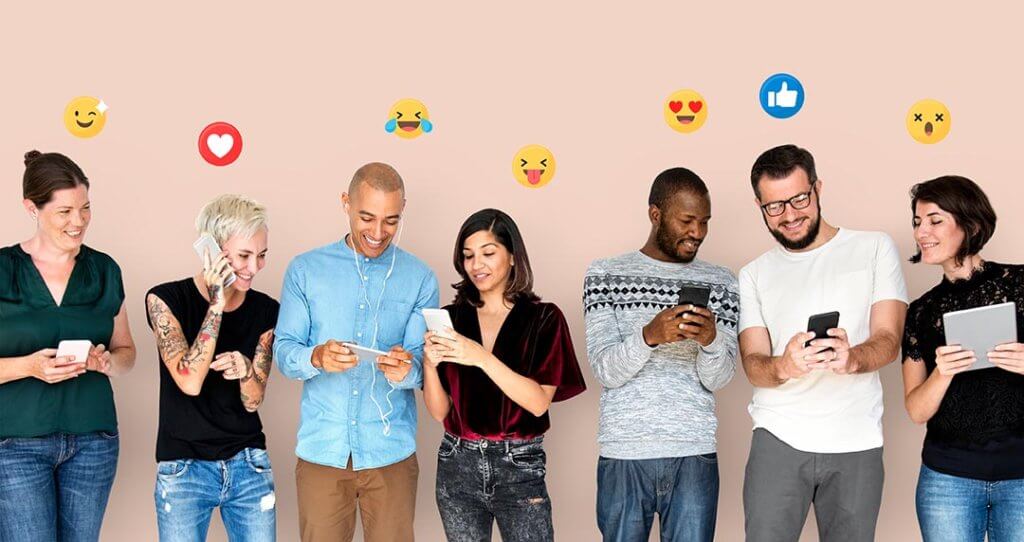Visual communication is powerful. Which is why it’s important to both recognise and understand how to use effective visual communication for your marketing and communication strategy.
Storytelling with images for marketing is commonplace amongst established brands. It is based on the concept of “telling a story”, or rather to emotionally involve the audience in order to make them feel involved and therefore push them to carry out an action, which can be a number of things – such as sharing, buying, or recruiting.
Why is visual storytelling important?
An image can often ‘speak’ louder than words, but the because of its ability to positively (or negatively) influence emotion (and therefore behaviour) it makes the visual narrative AKA visual storytelling of a brand a powerful marketing tool.
There has been several various neuromarketing studies to investigate what happens in the brains of humans in response to different stimuli related to products, brands, and advertising. It appears the reason for the success of visual storytelling lies, in the functioning of our mind. Our brain receives 90% of the information in visual form. Furthermore, it is capable of processing visual content 60,000 times faster than it does textual content – numbers of which businesses cannot choose to ignore in the age of the endless scroll of content online.
Adding to the numbers – 40% of people respond to visual information better than to text. On average, we only remember 20% of what we read. If I asked you to close your eyes and think about Apple or Starbucks, the majority of us will think of the logos and visuals and only then the tag-line. Even better yet you might recall how the brand makes you feel.

How does visual storytelling work?
True visual storytelling is much more than dropping the wordcount and upping the imagery. It is necessary, as the word itself says, to tell a story.
To successfully set up this visual narration it can be useful to draw a real storyboard – the images used must ‘speak’ to the audience therefore – in content, style and, colour range – they must be close to the tastes and sensibilities of the ideal customer personas and, above all, they must be consistent with the brand.
It can be easy to “wing it” and improvise when it comes to marketing or to create content in search of “likes” but visual storytelling is most powerful when considered at a strategic level mapped to the buyer personas and key values and goals of the business. The images we use must have their own communication skills and they must be able to convey a message even without an accompanying paragraph of text. In short, we should be inspired by the old Charlie Chaplin films, using just images that communicated clearly and brought out the emotions in the viewer.
Connecting with audiences via visual storytelling
Ultimately, visual storytelling’s goals are to connect with your audience, to inspire them to action, to engage and to buy you products or services. With great imagery and considered content, brands can not only communicate key messages and values but also promote customer loyalty and advocacy by creating or curating images that create a strong desire to take an action – whether a simple instinctual like, or conscious interaction such as sharing it with friends.
Visual storytelling has taken on the significance of a marketing strategy for companies that aims to attract potential customers, and, thrilling them, convincing them to choose them. Ads based on a strong visual component are often the ones that perform best. Differentiate the communication from a product-oriented one to one that instead “speaks” of the values linked to that product. So, check if the type of images you are using on social networks integrate with the values and emotions you want to arouse in your audience i.e., strong colours convey strong emotions for example and soft colours indicate more intimate emotions.

Visual storytelling for B2B
For a long time, B2B marketing has been characterised by a more formal and tendentially more detached tone than B2C, where the focus is on the emotional involvement of the customer to increase communicative effectiveness. Ignoring the impact of emotional factors on the choices of individuals, not only consumers but also different decision makers, can be counterproductive. The use of storytelling in B2B could prove to be particularly useful for engaging potential customers who would thus have a way of getting to know the company from a more human, interesting and in any case relevant point of view for the business.
The supplier is the guide, the buying company is the hero who must achieve his goal. Storytelling, as a methodology that arouses emotions through narration, can also be used in B2B marketing. The difficulty and the opportunity to use it is to really understand what the prospect’s emotions are.
For example, harnessing the power of video is one of the growing trends in B2B digital marketing. The use of these multimedia contents, in addition to exponentially increasing the level of communication, also manages to eliminate the barriers that technology often creates between the company and prospect.
These are tools that exponentially amplify the interaction with the target audience and stimulate sharing on social networks. They require quite a substantial investment of time and resources, especially when compared to text for an article, but given the popularity of visual marketing, it’s worth a try.
The images in the E-commerce marketing

The power of visual communication is also at the service of E-commerce Marketing. Images have the strength to break down the physical barrier that exists between the customer and the product with which they cannot have direct contact.
Through images we can also create a context of desire – by being able to visually illustrate to audiences how the lifestyle and status of the potential customer could change if they purchase the product you are selling. Using images for E-Commerce in this way allows you to generate a sense of closeness between the consumer and that state of well-being and happiness that can be seen in the images, which is seen by the audience as a direct result of purchasing the product. Often people buy brands, and the brands connotations of lifestyle and affluence attached.
Why does visual storytelling work so well?
So why does visual storytelling work so well? In short – because we are human. And for humans nothing is more engaging, exciting and inspiring than following the narration of a story all together. In the same way, the telling of a story through visual storytelling can create a sense of community.
The ideal would be to be able to integrate the two types of storytelling, the traditional one and the visual one, in a single strategy designed based on the business values that we want to convey to the public. However, it is not enough to share quality images or funny videos to obtain an effective strategy. Instead, it is necessary to create diversified and ad hoc content for each social network that has its own specific language and dynamics: what works on one social network can in fact flop on another. However, the common goal is to create images that allow the company to tell its story without being excessively self-referential but establishing and strengthening the relationship with the public through emotions.
Let us help you define your story, book in a consultation here. Or see how we’ve helped vibrant food brand Gourmade tell their story online.





0 Comments